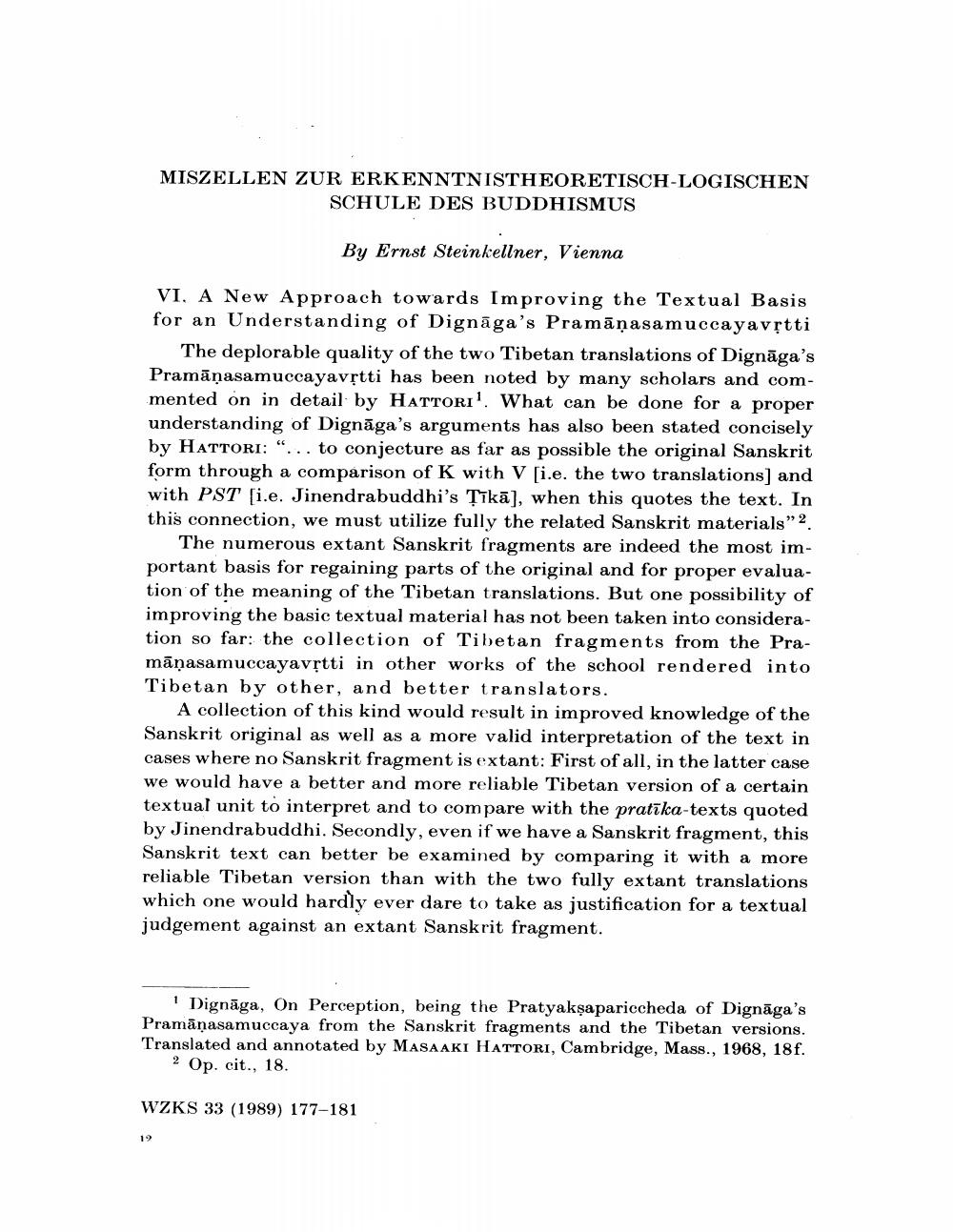________________
MISZELLEN ZUR ERKENNTNISTHEORETISCH-LOGISCHEN SCHULE DES BUDDHISMUS
By Ernst Steinkellner, Vienna
VI. A New Approach towards Improving the Textual Basis for an Understanding of Dignaga's Pramanasamuccayavṛtti
The deplorable quality of the two Tibetan translations of Dignaga's Pramāṇasamuccayavṛtti has been noted by many scholars and commented on in detail by HATTORI1. What can be done for a proper understanding of Dignaga's arguments has also been stated concisely. by HATTORI: "... to conjecture as far as possible the original Sanskrit form through a comparison of K with V [i.e. the two translations] and with PST [i.e. Jinendrabuddhi's Tīkā], when this quotes the text. In this connection, we must utilize fully the related Sanskrit materials" 2.
The numerous extant Sanskrit fragments are indeed the most important basis for regaining parts of the original and for proper evaluation of the meaning of the Tibetan translations. But one possibility of improving the basic textual material has not been taken into consideration so far: the collection of Tibetan fragments from the Pramāṇasamuccayavṛtti in other works of the school rendered into Tibetan by other, and better translators.
A collection of this kind would result in improved knowledge of the Sanskrit original as well as a more valid interpretation of the text in cases where no Sanskrit fragment is extant: First of all, in the latter case we would have a better and more reliable Tibetan version of a certain textual unit to interpret and to compare with the pratika-texts quoted by Jinendrabuddhi. Secondly, even if we have a Sanskrit fragment, this Sanskrit text can better be examined by comparing it with a more reliable Tibetan version than with the two fully extant translations which one would hardly ever dare to take as justification for a textual judgement against an extant Sanskrit fragment.
19
1 Dignaga, On Perception, being the Pratyaksapariccheda of Dignaga's Pramanasamuccaya from the Sanskrit fragments and the Tibetan versions. Translated and annotated by MASAAKI HATTORI, Cambridge, Mass., 1968, 18f. Op. cit., 18.
WZKS 33 (1989) 177-181




